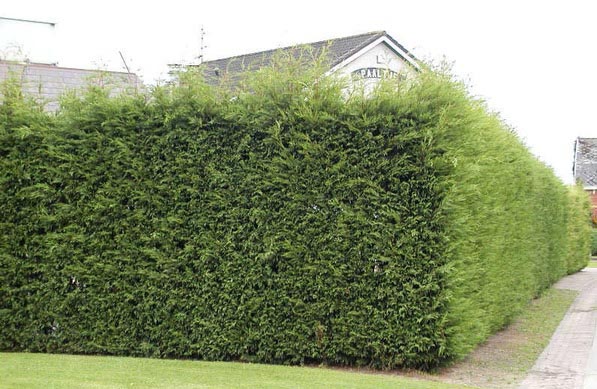
The bright blossoms of summer are long gone, fall’s fiery colors have also faded from view and now Mother Nature is folding her colorful tents and heading for a long winter’s nap.
But that doesn’t mean that everyone has to put their head down as they rush from the car to the front door. The winter landscape has its virtues, too. This time of year is the time to learn to appreciate the forms and shapes of trees and shrubs. Deciduous trees and shrubs now reveal their structural underpinnings that are hidden by the leaves in greener seasons.
Now is when one can really appreciate evergreens. Cool, neutral background plants from spring to fall, evergreens are the anchors of the winter landscape. Evergreens offer many tints and tones of green: classic medium green like a crayon; deep, dark, piney forest green; soft blue-green; dusky gray-green. And some evergreen varieties are golden—they positively glow against a slate-gray sky or a white blanket of snow.
But evergreens aren’t the only way to have something interesting to look at from the window in December. Some woody plants have striking forms that in winter are at their visual best, becoming living sculptures. When well placed, they can serve as focal points in the winter garden.
Weeping trees and shrubs have branches that arch gracefully like fountains, or bend toward the ground. Some look like umbrellas or mushrooms; the branches of others seem to flow like water. There are weeping varieties of lots of trees and shrubs. One way to find them (though it’s not all inclusive) is to look for the word “pendula” in their botanical names.
Where space is limited, a weeping Japanese maple might be a perfect addition to the landscape. One lovely cultivar goes by the botanical name of
acer palmatum dissectum atropurpureum
. This rather magnificent small tree grows to about 6 or 8 feet high, with a graceful arching form and twisted, contorted branches. It’s handsome all year, with its lacy, red-purple leaves that turn rich deep orange in autumn.
For pure angular drama that’s especially appealing in a contemporary setting, consider weeping blue atlas cedar, or
cedrus atlantica glauca pendula
. Its branches spill toward the ground, and staking the main trunk of a young tree helps establish the striking form.
Another dramatic tree in a more classical vein is the weeping European beech, or
fagus sylvatica purpurea pendula
. It grows 10 or so feet tall, and its long stems droop to the ground, hanging down from the branches like laundry on a clothesline.
Early in the season the leaves of the European beech are dark purple-black, then they turn greenish purple as the season progresses. In winter, it’s the branches that create the interest.
A weeping form of our native eastern red cedar,
juniperus virginiana pendula
, should do well here on the East End, if one can find it for sale. The tree grows 30 or more feet tall over time.
Trees and shrubs with twisted, gnarled branches aren’t just for Halloween. When the leaves have fallen, the plants become focal points—their bare branches strangely fascinating sculptures in the sleeping landscape.
Probably the best-known of all contorted plants is Harry Lauder’s walking stick, also known as “contorted hazel” or
corylus avellana contorta
. Its name memorializes a Scottish music hall star of the 1920s and ’30s and his gnarled cane.
The twisted stems of contorted hazel are used in flower arrangements. And in the garden, it can eventually grow to 15 feet high. You’d never notice this plant in summer but in winter it’s a standout. One caveat: grafted plants can spread by suckers (shoots coming up from the roots).
There’s also a twisted version of the leyland cypress,
cupressocyparis leylandii
, that’s so popular for privacy screening.
There are a number of curly willows, too. The corkscrew willow,
salix matsudana tortuosa
, is fast growing to 40 or more feet high, with twisted shoots. It’s really a form of weeping willow,
salix babylonica
, a lovely, romantic tree that’s unfortunately prone to storm damage and not as long-lived as some would like it to be. Its hybrid relative, golden curls, has yellow bark on twisted, weeping branches. And its sister, scarlet curls, has red stems in winter.
So remember that even though the winter weather has begun to arrive, there are still figments of beauty all around. One just needs to look for them.